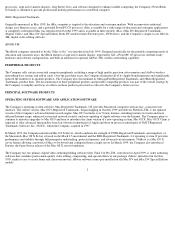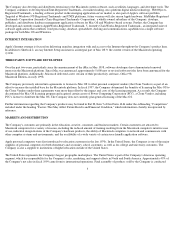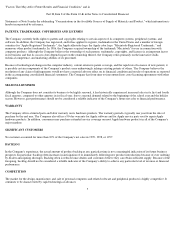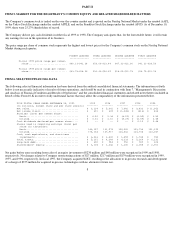Apple 1999 Annual Report Download - page 15
Download and view the complete annual report
Please find page 15 of the 1999 Apple annual report below. You can navigate through the pages in the report by either clicking on the pages listed below, or by using the keyword search tool below to find specific information within the annual report.Company of certain imaging and display products. The average revenue per Macintosh system fell 11% during 1998 as compared to 1997 from
$2,375 to $2,095, reflecting the effect of aggressive pricing of the Company's Power Macintosh G3 systems introduced in the first quarter of
fiscal 1998, the decline in net sales from the phase out of certain peripheral products, the overall industry trend toward lower priced products,
and the Company's reentry during the fourth quarter of 1998 into the lower-priced consumer market. Lastly, overall Macintosh CPU unit sales
for 1998 declined approximately 4% from 1997. International net sales were particularly affected by these factors and by the economic
conditions existing in Asia during 1998.
SEGMENT OPERATING PERFORMANCE
The Company manages its business primarily on a geographic basis. The Company's geographic segments include the Americas, Europe,
Japan, and Asia Pacific. The Americas segment includes both North and South America. The European segment includes European countries
as well as the Middle East and Africa. The Japan segment includes only Japan, while the Asia Pacific segment includes Australia and Asia
except for Japan. Each geographic operating segment provides similar hardware and software products and similar services. Further
information regarding the Company's operating segments may be found in Part II, Item 8 on this Form 10-K in the Notes to Consolidated
Financial Statements at Note 9, "Segment Information and Geographic Data," which information is hereby incorporated by reference.
AMERICAS
Net sales in the Americas segment increased 2% to $3.527 billion during 1999 as compared to 1998, while Macintosh unit sales increased 22%.
This followed a 5% decline in net sales in the Americas between 1998 and 1997. During 1999, the Americas segment represented
approximately 57% and 59% of the Company's total net sales and total Macintosh unit sales, respectively. The results experienced by this
segment in 1999 reflect the overall trends experienced by the Company of growing Macintosh unit sales offset by declines in the average
revenue per Macintosh system.
EUROPE
Net sales in the Europe segment increased 2% to $1.317 billion during 1999 as compared to 1998, while Macintosh unit sales increased 23%.
This followed a 16% decline in net sales in the Europe segment between 1998 and 1997. Like the Americas segment, Europe's results in 1999
as compared to 1998 are indicative of strong growth in Macintosh unit sales offset by declines in the average revenue per Macintosh system.
JAPAN AND ASIA PACIFIC
Macintosh unit sales and net sales in Asia, particularly in Japan, recovered during 1999 from the declines experienced in 1998. Net sales in the
Japan segment increased 17% or $127 million to a total of $858 million in 1999 as compared to 1998. Macintosh unit sales in Japan increased
35% during 1999 compared to 1998 while Macintosh unit sales in the Asia Pacific segment increased 37%. The increases in net sales and
Macintosh unit sales in both Japan and Asia Pacific are the result of strong iMac sales experienced by these operating segments, strong growth
in Japanese consumer sales, and the general economic recovery experienced in the region.
BACKLOG
In the Company's experience, the actual amount of product backlog at any particular time is not a meaningful indication of its future business
prospects. In particular, backlog often increases in anticipation of or immediately following new product introductions because of overordering
by dealers anticipating shortages. Backlog often is reduced once dealers and customers believe they can obtain sufficient supply. Because of the
foregoing, backlog should not be considered a reliable indicator of the Company's ability to achieve any particular level of revenue or financial
performance. Further information regarding the Company's backlog may be found below under the subheading "Product Introductions and
Transitions"
12
























